Ensuring swift and efficient data accessibility is a top priority in ServiceNow instance data replication. The aim is to bolster database availability and reliability, mitigating the potential for data loss in the event of primary server failure. Moreover, data replication holds the potential to enhance overall performance by distributing workload across multiple replicated servers.
This post will outline the overview of ServiceNow replication and its benefits, the difference between data replication vs data synchronization, and various methods available to connect ServiceNow to other applications.
- What is Data Replication
- Why Replicate Data
- How Data Replication Works
- ServiceNow Instance Data Replication
- Data Replication with ServiceNow IntegrationHub
- Limitations of ServiceNow IntegrationHub
- Recap
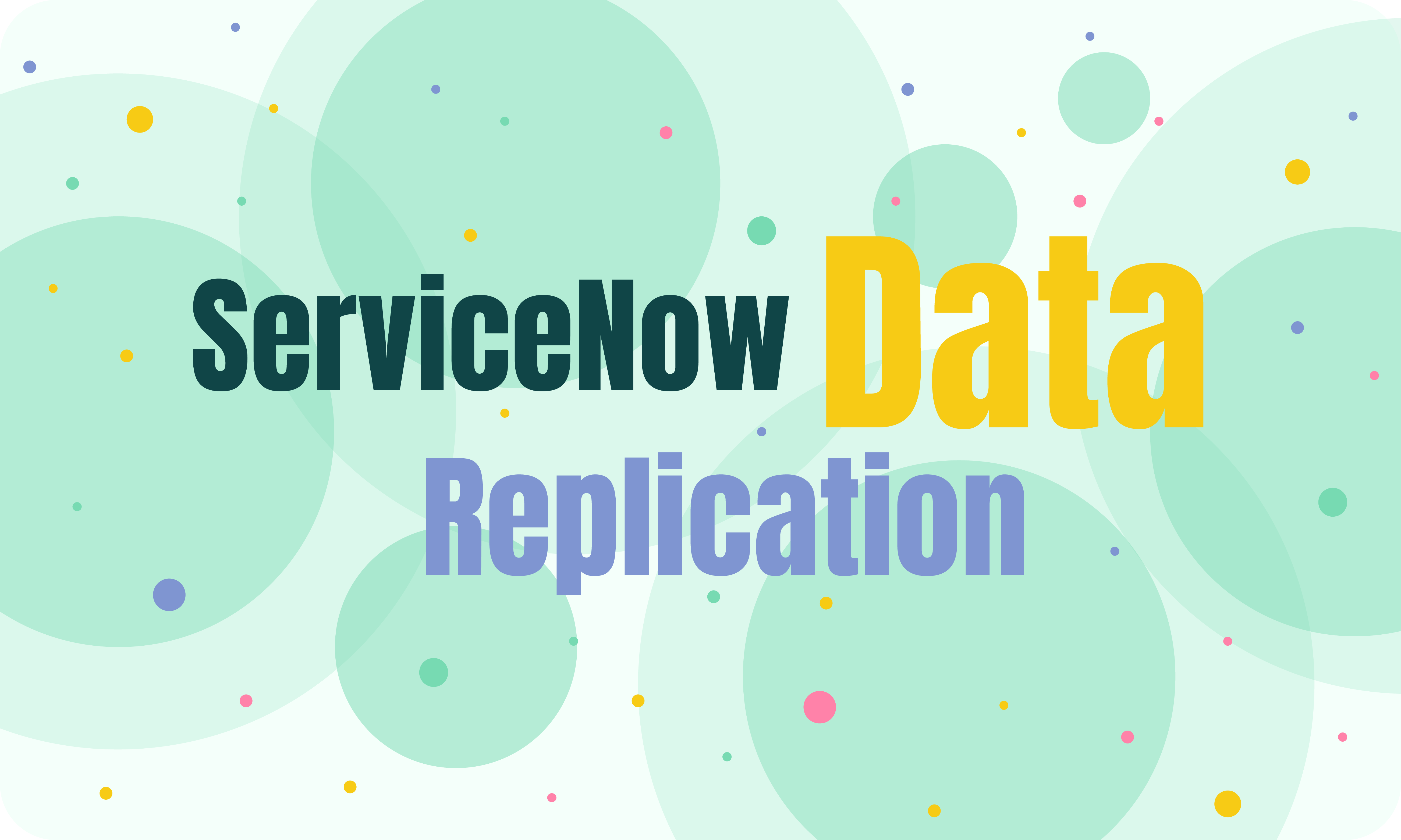
What is Data Replication
Data is the backbone of information and knowledge, making it imperative to maintain accuracy and integrity. Data replication stands as a key method for safeguarding this vital asset. It involves creating multiple copies of data, ensuring each replica remains synchronized, reliable, and resilient in real time.
Organizations employ data replication to ensure that users have immediate access to the most current and authentic information. This redundancy of copies not only facilitates seamless access but also serves as a safeguard against potential disruptions. Even if one copy becomes inaccessible, users can still retrieve the necessary information with minimal delay and without significant data loss.
There are various types of data replication methodologies. Synchronous replication involves replicating every original data operation in real time, ensuring that each copy remains identical. On the other hand, asynchronous replication allows for a delay between data updates and replication, typically occurring after the statement is passed to the database. Both approaches offer distinct advantages and are chosen based on specific organizational needs and priorities.
Data Replication vs Data Synchronization
Although data replication and data synchronization are frequently used interchangeably, they carry distinct meanings and serve different purposes. While they can be used together or separately depending on the context, it’s essential to grasp their unique characteristics.
- Data replication implies that there are two or more copies of all the data simultaneously, while data synchronization means that the copies of data are being kept updated, but each copy does not necessarily contain all of the data.
- Data synchronization can save space, transfer only the changes, and provide consistent data, while data replication can need more space to copy all the data and provide stable and available data.
Why Replicate Data
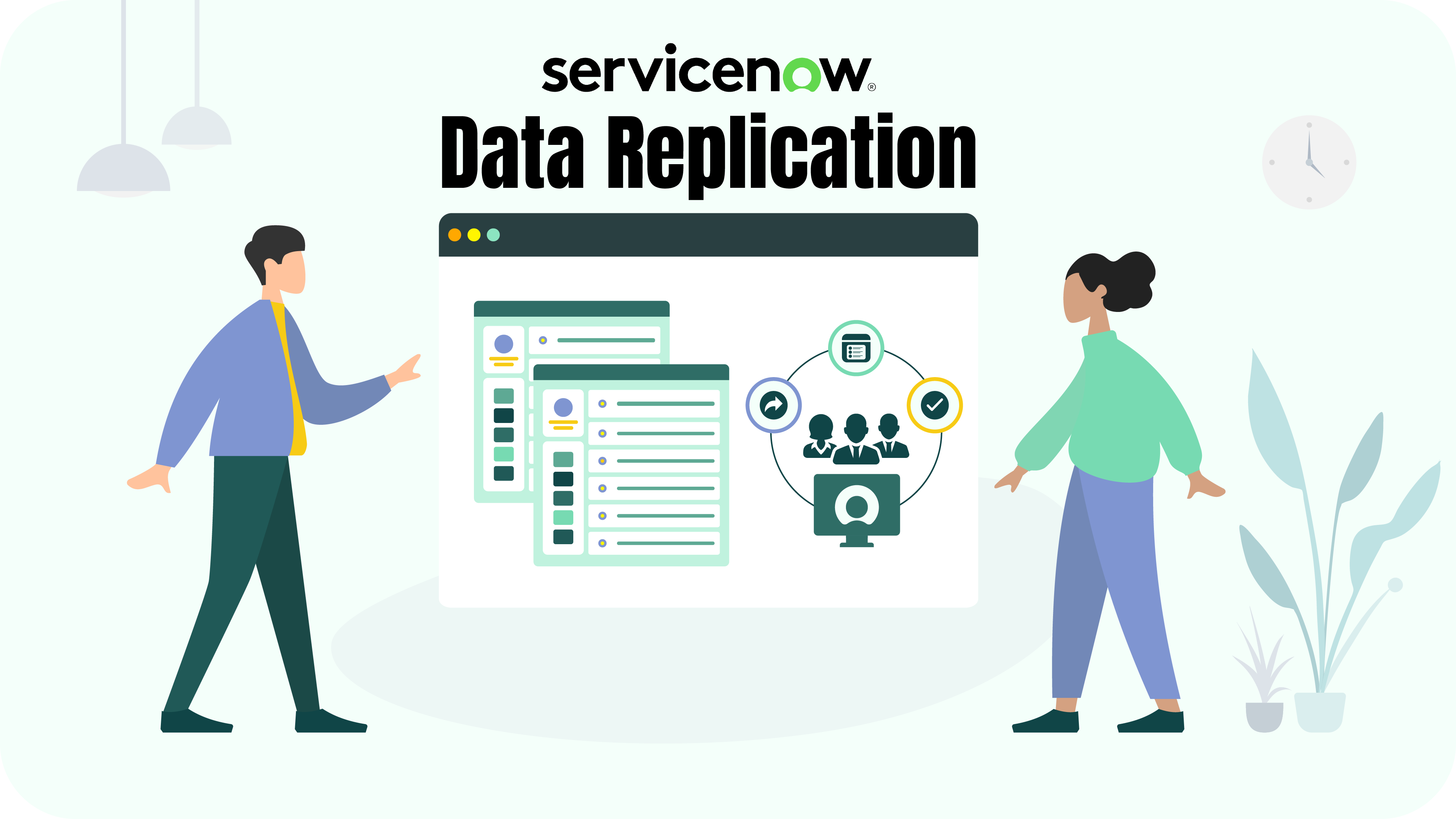
Data replication is a powerful solution to enhance organization’s strength and value-edit activities. Its significance spans various domains, each contributing to the overall resilience and efficiency of an organization.
- Continuous Accessibility and Reliability
At its core, data replication guarantees that essential information is readily available and dependable. This real-time access empowers users with timely insights, fostering operational efficiency and responsiveness.
- Comprehensive Data Safeguarding
Particularly valuable for large organizations, data replication acts as a failsafe against system failures or breaches. By maintaining redundant copies of critical data, it ensures business continuity and minimizes disruptions.
- Improved Data Availability and Resilience
Through distributing data across multiple locations, replication enhances its availability and resilience. This redundancy not only facilitates uninterrupted access but also mitigates the risk of data loss, safeguarding vital organizational assets.
- Enhanced Performance and Collaboration
Replicated data facilitates seamless sharing and collaboration between different units or branches within an organization. This optimized data flow fosters innovation and productivity by streamlining operations and enabling efficient cross-functional cooperation.
- Ensuring Compliance and Recovery
Data replication is critical in meeting regulatory requirements by upholding data integrity and facilitating audits. Moreover, it strengthens disaster recovery efforts by expediting the restoration of critical systems and information in the event of unforeseen disruptions.
How Data Replication Works
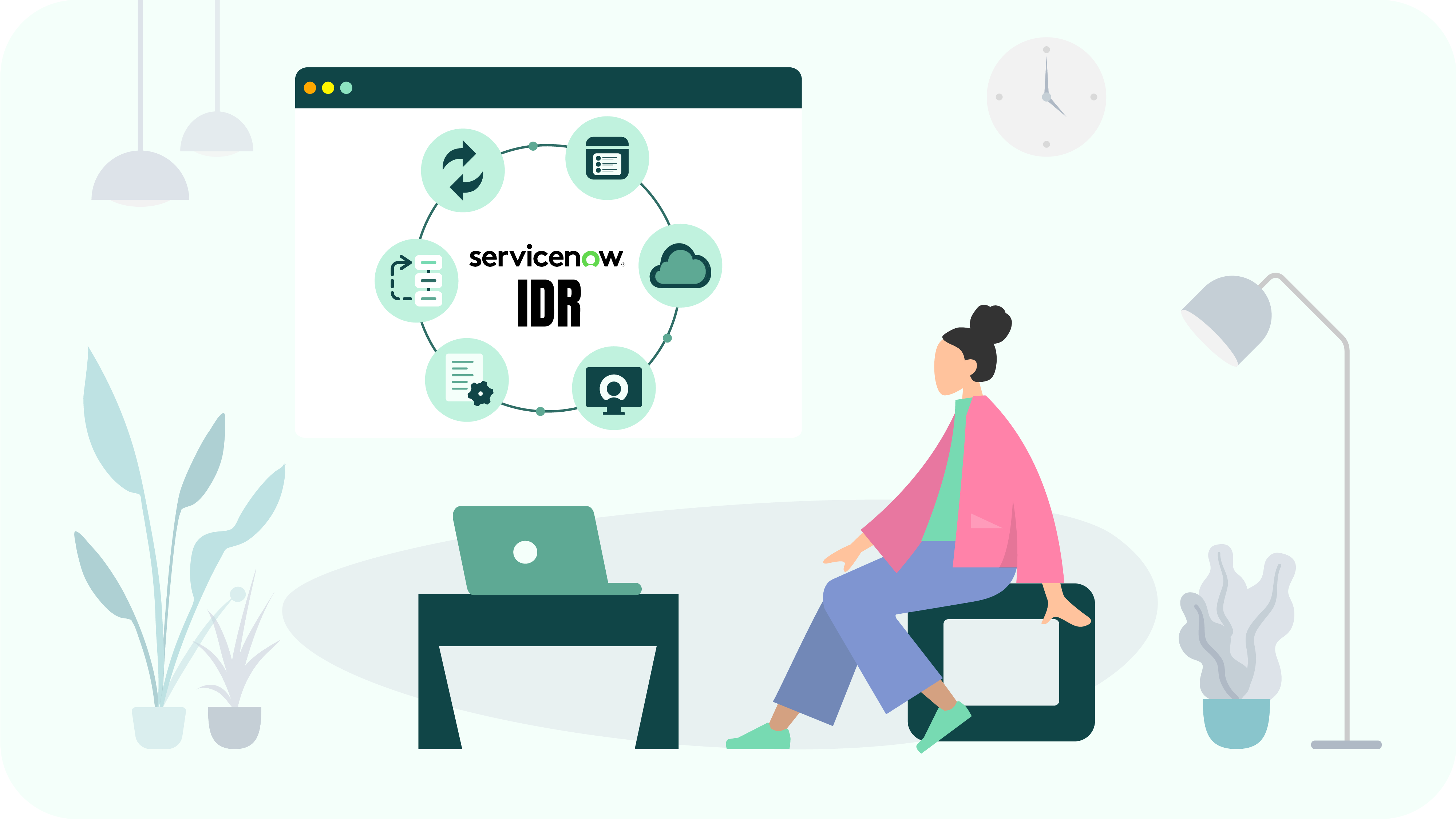
Data replication is critical in data synchronization and system integration, enabling seamless data exchange between disparate systems. By configuring replication rules, organizations can precisely control the synchronization of tables and their respective columns.
The data replication process offers flexibility regarding directionality, scheduling, and event triggers. It can operate in one or two directions, facilitating real-time data exchange and effectively managing operations across multiple regions. Additionally, it allows the segregation of business unit-specific data while enabling occasional collaboration and ensuring data recovery during disasters.
Data Replication Process
By following these steps, organizations can effectively implement data replication processes, ensuring seamless synchronization and integration across their systems while maintaining data integrity and consistency.
1. Use Data Replication Plugin: Begin by deploying the data replication plugin to initiate the replication process from one instance to another.
2. Configure Producer Replication Set: Define a producer replication set, specifying the tables and columns to be replicated.
3. Activate Producer and Consumer Replication Sets: Enable both producer and consumer replication sets to configure data updating. It includes performing a one-time download, or seeding, of all producer data to the consumer.
4. Apply Filter Options: Activate the consumer replication set and utilize the filter criterion feature to specify the number of seeded records.
5. Implement Partial Seeding: Employ partial seeding to manage large numbers of records more efficiently, dividing them for replication.
6. Utilize Audit Trail: Monitor the history of updates using the audit trail feature, ensuring transparency and accountability in the replication process.
7. Implement Transformation: Employ transformation techniques to replicate data from the producer source to tables with different names on the consumer source.
8. Use Data Replication Adapters: Before storing it on the consumer source, utilize data replication adapters to modify data, such as time zone adjustments or currency conversions.
ServiceNow Instance Data Replication
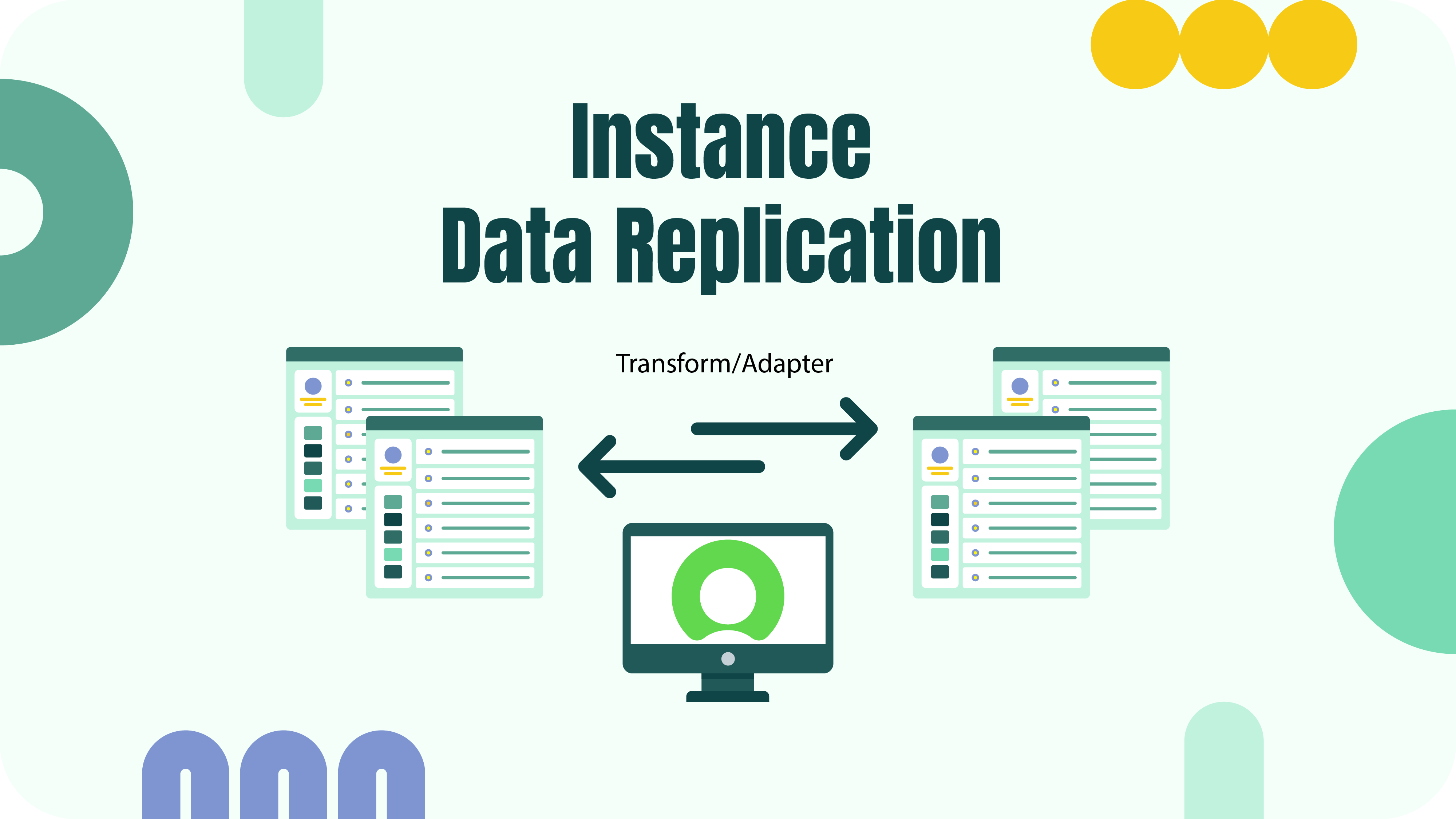
ServiceNow Instance Data Replication (IDR) is a crucial mechanism to synchronize data between different ServiceNow instances. This process involves copying updates from one instance to another, facilitating one-directional or bi-directional replication. Data replication can be executed fully or partially, employing various strategies tailored to the specific needs of each business.
The ServiceNow Instance, Data Replication app, simplifies this process by streamlining replication from the producer instance to the consumer instance. It ensures a consistent flow of data across all company departments, enhancing data accessibility and promoting data consistency throughout the platform. Ultimately, this enables seamless access to data for all users, improving efficiency and facilitating informed decision-making across the organization.
Benefits of ServiceNow Data Replication
ServiceNow IDR offers numerous benefits, including:
1. Seamless Data Synchronization: ServiceNow IDR ensures that critical data is automatically synchronized across different instances. For example, customer service tickets created in one instance are replicated in real-time in other instances, enabling consistent service delivery across the organization.
2. Customizable Data Mapping: Users can easily customize and map data to specific table columns on different instances. For instance, employee information updated in one example can be mapped to corresponding fields in another sample, streamlining HR processes across multiple departments.
3. Reliable Disaster Recovery: ServiceNow IDR provides reliable data recovery capabilities in the event of a system crash. For example, incident records lost due to a system failure can be quickly recovered from replicated data, minimizing service disruptions and ensuring continuity of operations.
4. Bidirectional Data Updates: With ServiceNow IDR, updates made to data on consumer instances can be seamlessly replicated back to the producer instance. For example, changes made to service requests in a remote office instance are synchronized with the central instance, ensuring consistency in service delivery and reporting.
5. Enhanced Monitoring and Validation: ServiceNow IDR allows organizations to activate notification generation and replication validation features. For example, IT administrators can receive alerts when replication errors occur, ensuring timely resolution and maintaining data accuracy across the ServiceNow platform.
Data Replication with ServiceNow IntegrationHub
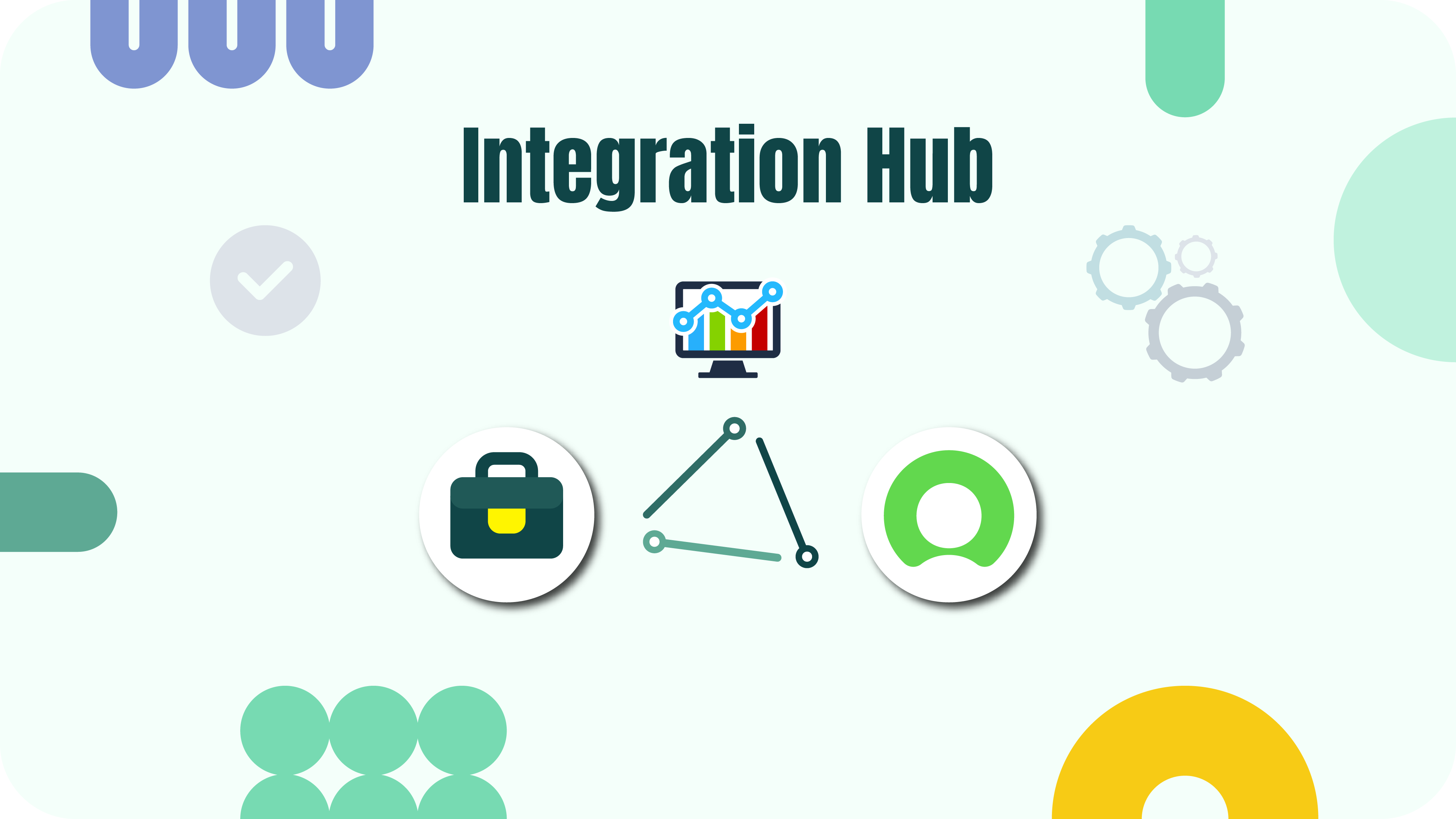
Instant data replication within ServiceNow is a powerful capability, but it’s limited to replicating data within the ServiceNow platform itself and doesn’t extend to third-party applications. In short, ServiceNow IntegrationHub extends the capabilities of instance data replication. To bridge this gap and integrate ServiceNow products with any API-enabled system seamlessly, users can leverage ServiceNow IntegrationHub.
IntegrationHub offers a streamlined approach to integration, providing cost reduction, workflow acceleration, and simplified process automation across the organization. By effortlessly connecting workflows to hundreds of essential systems, users can easily synchronize instances and data across various platforms. Furthermore, IntegrationHub empowers IT developers to create custom spokes tailored to specific use cases, facilitating deeper integration and automation to address unique business requirements efficiently.
Unlocking the full potential of the ServiceNow platform and meeting organizational needs often necessitates integration with third-party apps. However, selecting the proper integration method requires careful consideration of data volumes, performance impact, timing, integration resilience, data distribution, and overall costs.
Integration with third-party apps can be achieved through various methods, including native ServiceNow applications, Integration Platform as a Service (iPaaS) tools, ETL (Extract, Transform, Load) tools, or specialized ServiceNow connectors like the Power BI Connector for ServiceNow and Tableau Connector for ServiceNow, which offer a 30-day free trial supporting all features of the app, without restrictions.
Limitations of ServiceNow IntegrationHub
While ServiceNowIntegrationHub can copy data to third-party systems, its functionalities may only sometimes align with the complex needs of businesses leveraging ServiceNow services. As organizations strive to maximize their ServiceNow investment, they may encounter several limitations within IntegrationHub that merit consideration:
- Complex Setup for Bidirectional Integration: Establishing bidirectional integration and data synchronization can be challenging without meticulous configuration requirements on the connected system. This complexity adds an additional layer of management and oversight to the integration process.
- Cumbersome Transaction Handling: Transactions within IntegrationHub often involve numerous tasks and steps, contributing to a convoluted management process. This intricacy could impede efficiency and streamline data flow.
- Limited Customization Options: While IntegrationHub offers pre-formatted scenarios via spokes—logical groups of actions covering various third-party apps—creating custom spokes may require resources that organizations may not readily possess. Despite the potential benefits of customization, many organizations may be constrained by the premium options available.
Navigating these challenges effectively requires a comprehensive understanding of IntegrationHub’s capabilities and limitations and careful planning and resource allocation to ensure seamless integration and data management within the ServiceNow ecosystem.
Recap
Data replication is essential for disaster recovery planning for large and small organizations operating in different environments that guarantee accurate information copying. By replicating data sets to an off-site location, organizations ensure high data availability, facilitate data sharing, and improve analysis and reporting. Moreover, one can more easily restore data after power outages, natural disasters, human error, or cyberattacks. There is no doubt that IDR is a powerful tool, so don’t hesitate to use ServiceNow instance data replication to benefit your organization and embrace seamless data synchronization.
About acSoft Blog
The acSoft blog is a trusted destination for individuals seeking comprehensive insights into the ServiceNow ecosystem. As a distinguished ServiceNow Build Partner, acSoft Inc. boasts a remarkable track record, evident through our Now Certified apps available on the ServiceNow Store. Our commitment lies in offering unparalleled expertise and guidance exclusively tailored to ServiceNow topics.
At acSoft Inc., we pride ourselves on curating content that delves deep into ServiceNow products, solutions, tips, tricks, and how-to guides. With a team of industry experts deeply entrenched in the ServiceNow community, our blog guarantees clear, reliable, and up-to-date insights to enrich your ServiceNow journey.

